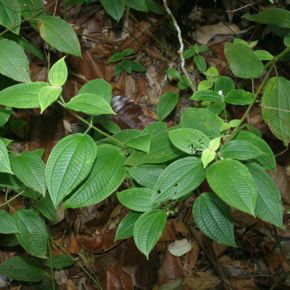We have completed a checklist of bird calls and sounds, collated from seven years of posting bird behaviour in the BESG website LINK. This checklist will be updated every so many months to keep it current. The aim here is to discourage birdwatchers from only looking at birds when out in the field. We are trying to get them to be true citizen scientists LINK, to observe and document all aspects of behaviour as well as record birdsounds.
We are now embarking on another project: to compile a catalogue of plant-bird relationship. We have accumulated a substantial amount of information on this aspect of bird behaviour and it is time to collate the information.
Why plant-bird catalogue and what are the benefits?
Singapore has been successful in turning the country into a Garden City (Wee & Corlett, 1986). During the early years the priority was to line roads with shady trees. So angsana (Pterocarpus indicus) was widely planted as it is possible to root thick branches and grow them as instant trees. Once we had greenery, we wanted colours. Thus plants with colourful flowers and leaves were sought out. Next we wanted to attract wildlife to the sterile urban forest. And so we had lists of plants that attracted nectarivorous, gramnivorous, frugivorous and insectivorous birds (Hails, 1985; Hails et al., 1990). Planting these trees and shrubs had transformed the urban jungle into a vibrant garden city.
Right now we are working to turn our Garden City into a City in a Garden. For this we need to update our lists of plants. After all, plants do not just provide food for birds. They also provide nesting and roosting sites, refuge from predators, etc. LINK.
We are currently collating data sent in by citizen scientists and posted on this website, to provide a source where information on what plants provide what benefits to birds. Such information will enable those involved in our City in a Garden project to select the right plant species for their specific needs.
Unfortunately most contributors stress on the birds, leaving out the plants. Admittedly, it is not easy to identify the plants, especially the forest species. But the roadside and ornamental plants should be easier to identify, now that we have a number of popular books on the subject (Boo et al., 2006; Wee, 1990. 2003, 2005).
It is suggested that photographers also focus on the plants, especially the leaves, flowers and fruits, if available, when documenting bird behaviour. Check out the images on the left that show the plant, flowers and fruits of Koster’s Curse or Hairy Clidemia (Clidemia hirta). With such images, horticulturists and botanists can subsequently assist in the identification of the plant. If the plant cannot be identified, we still have the images for possible identification in the future. In this way we can enlarge the catalogue and make it more useful to the people involved in greening the city.
As we complete one group of plants (figs, Macaranga, grasses, palms, ferns, etc.), we will post all available data on that group. Once all groups have been posted, we hope to compile them together into a main catalogue. Obviously the final catalogue will be updated regularly when new information becomes available.
Excellent examples of past posts where plants are identified include: Punggol Park LINK; Australian Mulberry LINK; figs LINK; and Macaranga LINK.
So the next time you go out into the field, please remember to also pay some attention to the plants. Take a few images of the plant itself, the leaves and how they are arranged along the twigs, flowers or fruits where available for later identification.
YC Wee
Singapore
September 2012
(Video courtesy of National Parks Board, Singapore)
References:
1. Boo, C. M., Omar-Hor, K. & Ou-Yang, C. L. (2006). 1001 garden plants in Singapore. Singapore: National Parks Board. 2nd edition. 798 pp.
2. Hails, C.J., 1985. Studies of the habitat requirements and management of wild birds in Singapore. Report submitted to Commissioner for Parks & Recreation, Ministry of National Development, Singapore. 183 pp.
3. Hails, C.J., M. Kavanagh, K. Kumari & I. Ariffin (1990). Bring back the birds! Planning for trees and other plants to support wildlife in urban areas. WWF Malaysia.
4. Wee, Y. C., 1990. A guide to the wayside trees of Singapore. Singapore Science Centre. (2nd ed.) 160 pp.
5. Wee, Y. C., 2003. Tropical trees and shrubs – A selection for urban plantings. Sun Tree Pub., Singapore. 392pp.
6. Wee, Y. C., 2005. Ferns of the tropics. Times Editions-Marshall Cavendish, Singapore. 2nd ed. 190 pp.
7. Wee, Y.C. & R. Corlett, 1986. The city and the forest: plant life in urban Singapore. Singapore University Press. 186 pp.



![Clidemia hirta fl [wyc] - 5](https://besgroup.org/wp-content/uploads/Clidemia-hirta-fl-wyc-5.jpg)
![Clidemia hirta fr [wyc] - 6](https://besgroup.org/wp-content/uploads/Clidemia-hirta-fr-wyc-6.jpg)







2 Responses
Hi YC,
Kindly recommend some good reference field guide books of plants and flowers of SEA to add to my reference collection that would help identify the tree/flora species. I have to admit at times, I do like very much to provide an identification of plant species associated with the birds, only to know my knowledge of wild plants/trees frustratingly so limited.
Cheers,
Daisy
Will compile a list and post it soon – with comments.